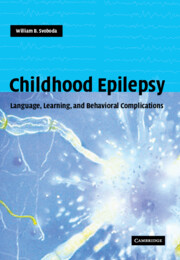1 - Looking ahead
Published online by Cambridge University Press: 26 October 2009
Summary
For many centuries, seizures and epilepsy were thought of in terms of magic and mysticism, demons and dread. Were the seizure events a divine blessing or a demonic curse? Even into the mid twentieth century, epilepsy, idiocy, and insanity were often spoken of as interrelated, for managements often dulled the mind and disturbed the functioning. Epilepsy, mental illness, and falling IQs were thought to be the product of a deteriorating brain, possibly inherited. The prejudices gave rise to such terms for epilepsy as “demoniac” and “lunacy” (moonstruck).
Advocates responded with denial that epilepsy was anything more than a brief interruption of normal function due to a sudden uncontrolled burst of abnormal electrical activity in the neural network of the brain, occurring in otherwise normal people who had no related intellectual or emotional disturbances.
The dawn of the modern age came with the findings of the Federal Commission on Epilepsy and Its Consequences of 1977. This exhaustive study spearheaded the emerging awareness that epilepsy is seldom “just seizures.” Roughly half of the individuals with epilepsy experience significant emotional problems and nearly half experience learning difficulties. Such associated problems often lead to later problems in employment and socialization, thus becoming more handicapping than just seizures, spikes, and medications.
The medical world now approaches epilepsy in terms of electroencephalograph (EEG) interpretations, medications, and antiepileptic blood levels, to which have been added surgery, stimulators, and diets. This is the medical model of epilepsy.
- Type
- Chapter
- Information
- Childhood EpilepsyLanguage, Learning and Behavioural Complications, pp. 1 - 8Publisher: Cambridge University PressPrint publication year: 2004



